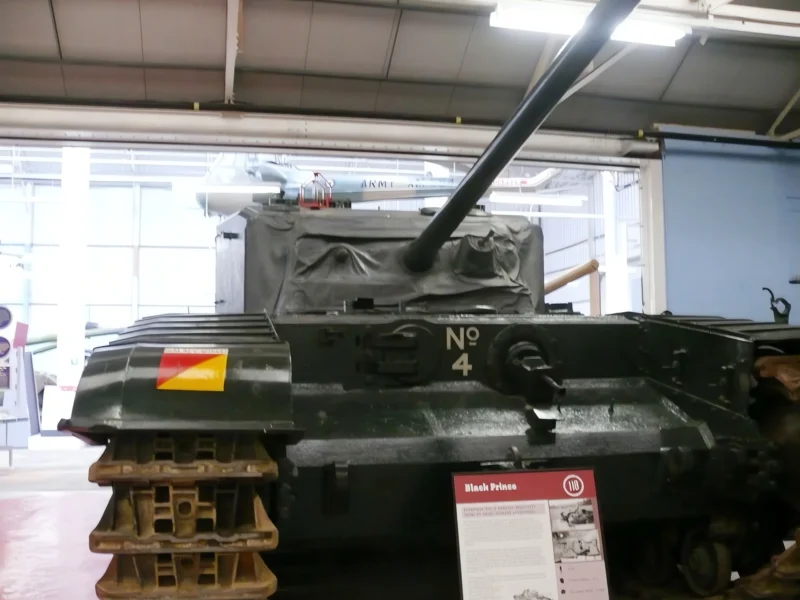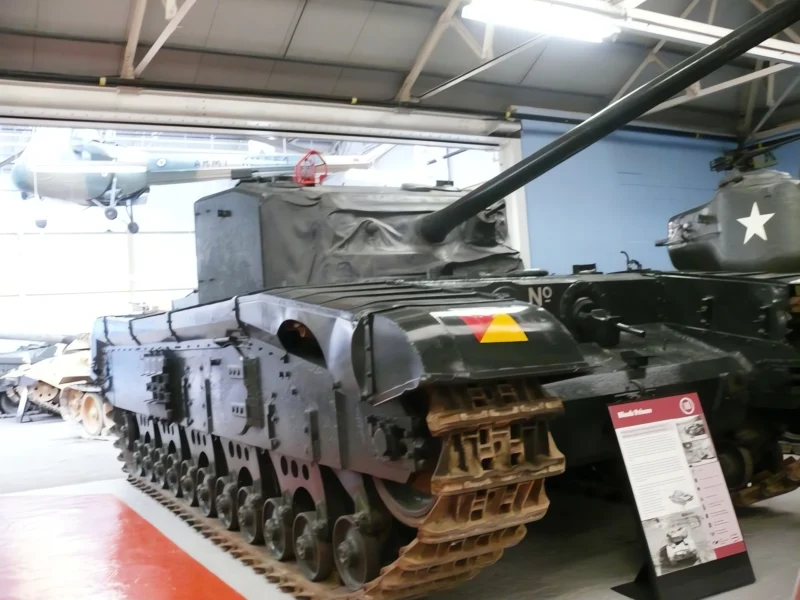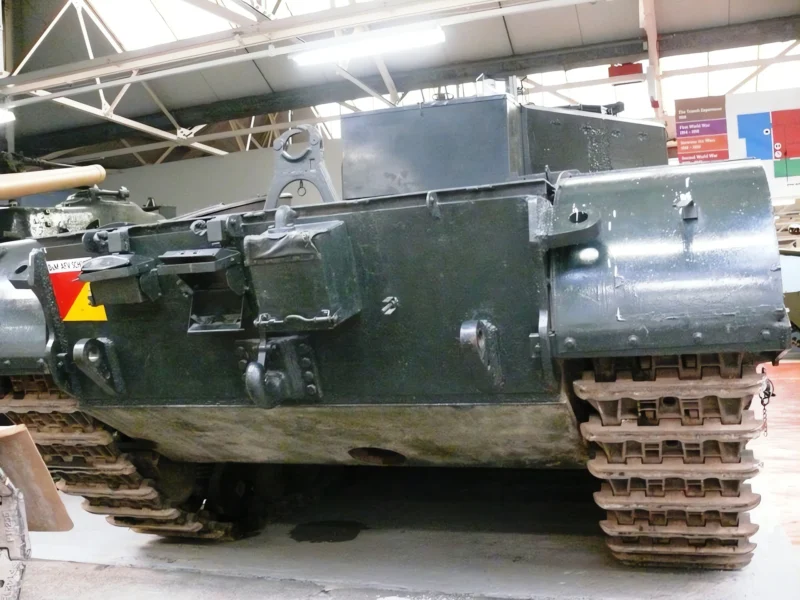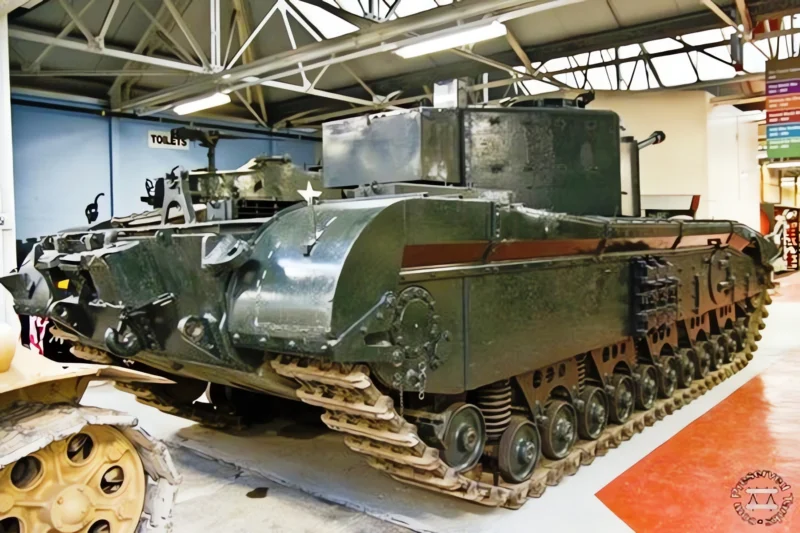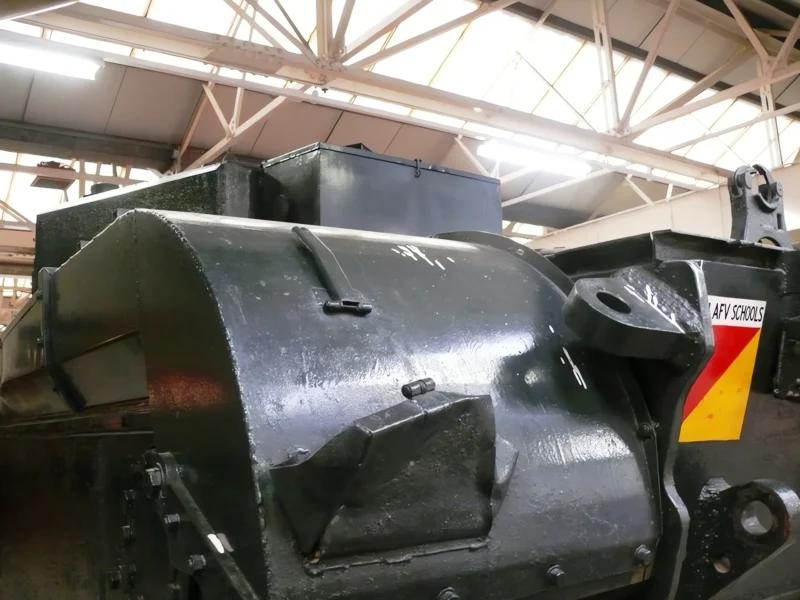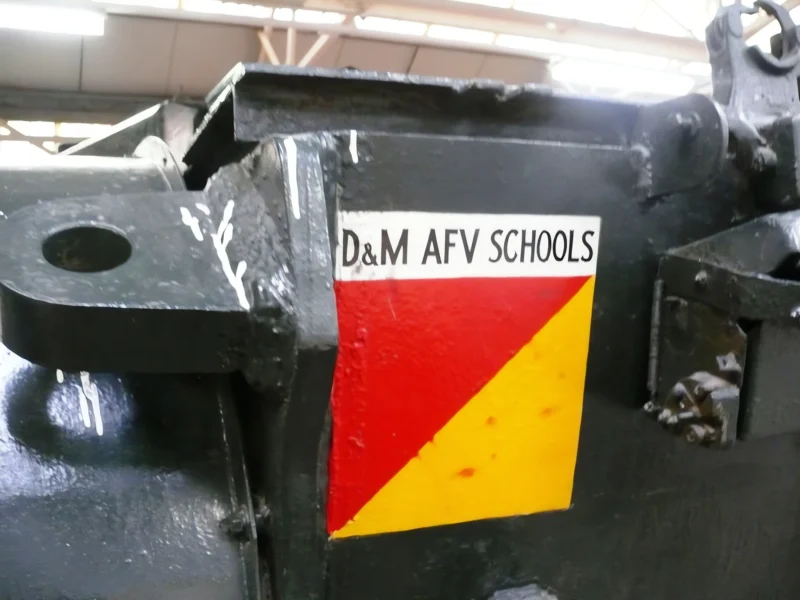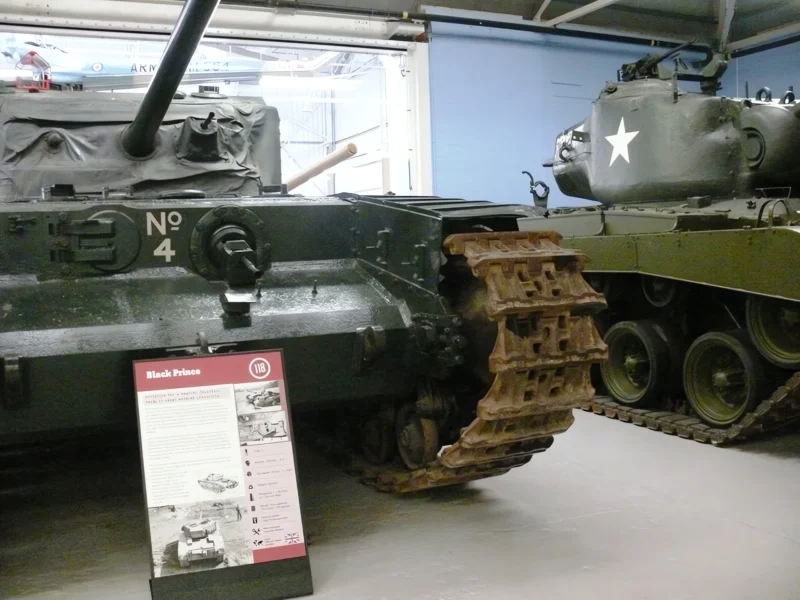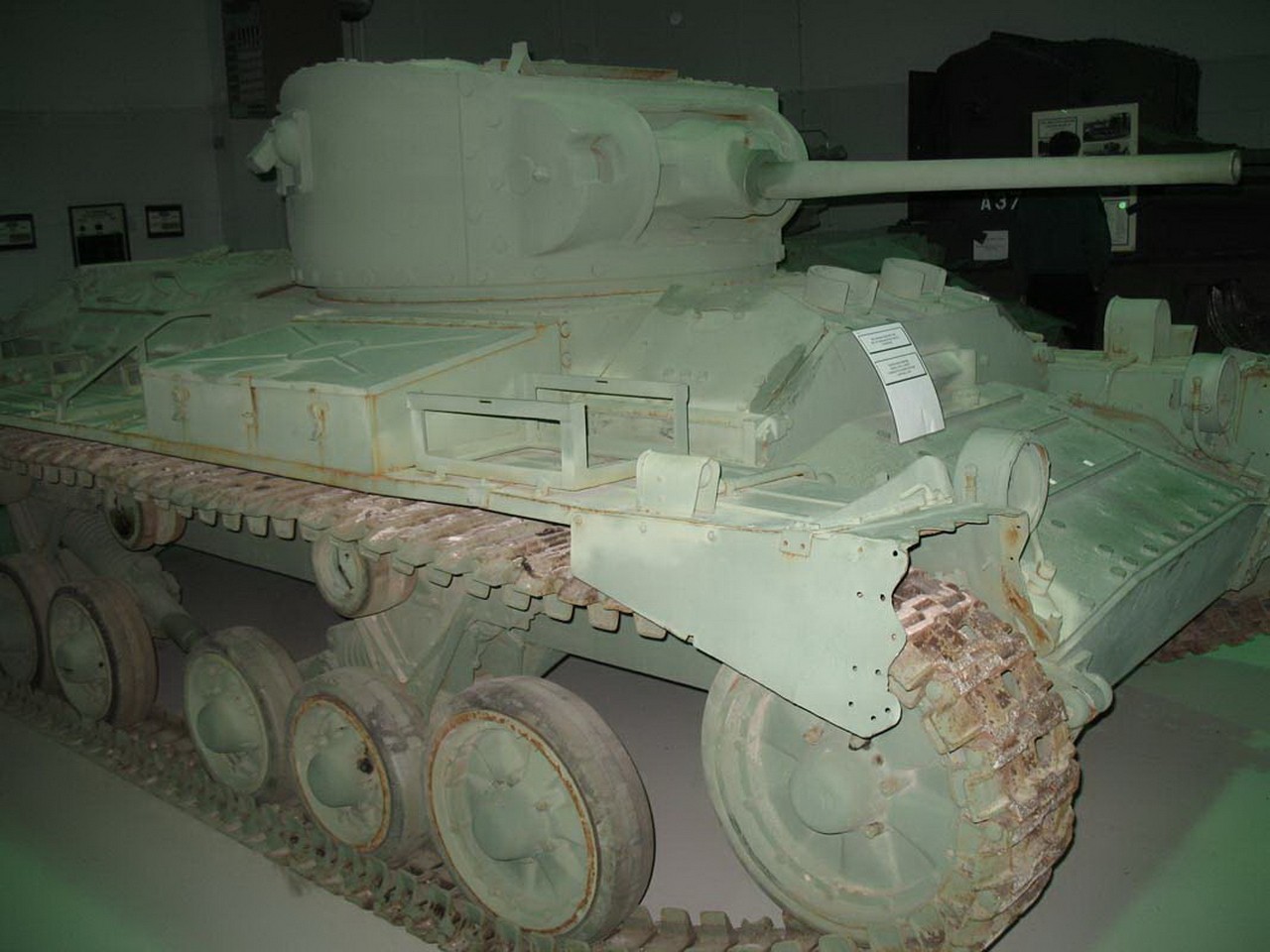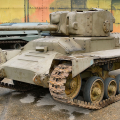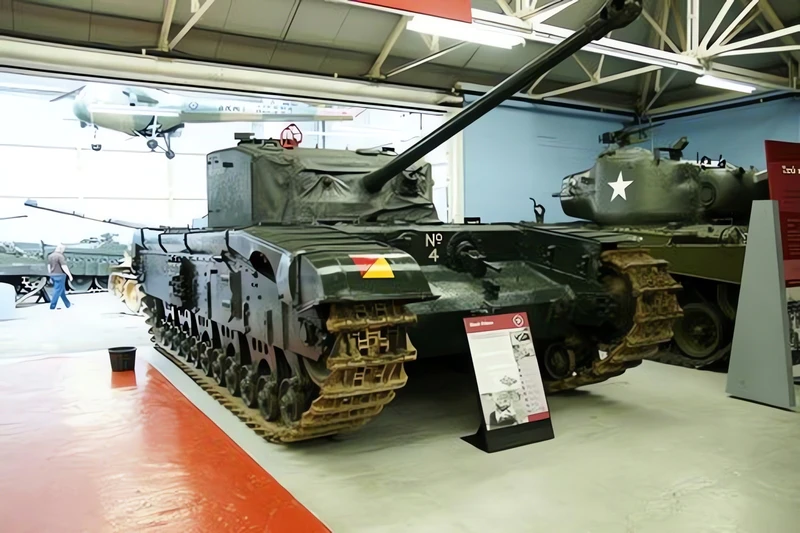
Tank Infantry A43 Black Prince | |
|---|---|
| Land | Uk |
| Role | De tank van de infanterie |
| Geproduceerd | 1945 |
| Gebouwd | 6 prototypes |
Tank, Infanterie, Zwarte Prins (A43) is de naam die werd toegekend aan een experimentele ontwikkeling van de Churchill-tank met een grotere, bredere romp en een QF 17-pounder (76 mm) kanon. Het is vernoemd naar Edward, de Zwarte Prins, een beroemde 14e-eeuwse militaire leider.
| Tank Infantry A43 Black Prince Walk Around | |
|---|---|
| Fotografen | Onbewust |
| Lokalisatie | Onbewust |
| Foto 's | 18 |
Wait, Searching Tank Infantry A43 Black Prince for you…

| Churchill Black Prince Walk Around | |
|---|---|
| Fotograaf | Mat Flegal |
| Lokalisatie | Onbewust |
| Foto 's | 219 |
Wait, Searching Tank Infantry A43 Black Prince for you…

Zie ook:
General Characteristics (World War II Prototype)
The A43 Black Prince was a late-war British attempt to significantly upgrade the Churchill tank chassis to mount a powerful 17-pounder (76.2 mm) gun while retaining the heavy armor characteristic of the Infantry Tank doctrine.
| Property | Value (Prototype) |
|---|---|
| Role | Infantry Tank (Heavy) |
| Designer | Vauxhall Motors (based on Churchill VII) |
| Ontworpen | 1943–1945 |
| Bemanning | 5 (Commander, Gunner, Loader, Driver, Co-driver/Machine Gunner) |
| Combat Weight | Approx. 50 tonnes (110,000 lb) |
| Aantal gebouwd | 6 (Prototypes) |
Armament and Protection
- Main Armament: One 76.2 mm (3-inch) Ordnance QF 17-pounder anti-tank gun. This required a new, wider turret compared to the standard Churchill.
- Secondary Armament: Two 7.92 mm Besa machine guns (one coaxial, one hull-mounted).
- Armor Thickness: The armor was extremely thick, ranging up to 152 mm (6 inches) on the frontal hull and turret face, making it one of the most heavily armored tanks of the war.
- Key Design: The hull structure and suspension were directly derived from the Churchill Mark VII, but the hull was widened to accommodate the new turret ring.
- Service Status: Never entered service. Testing coincided with the end of World War II and the introduction of the more versatile and faster Comet and Centurion tanks.
Powerplant and Mobility
- Engine: Bedford Twin-Six gasoline engine.
- Power Output: 350 hp (261 kW).
- Maximum Road Speed: Only 17 km/h (11 mph).
- Power-to-Weight Ratio: A very low 7 hp/tonne due to the high weight and underpowered engine.
- Suspension: Vertical Spring Suspension (common to the Churchill family).
- Mobility Issue: The increase in weight from the base Churchill (approx. 40 tonnes) severely degraded the vehicle’s speed and cross-country performance, making it tactically obsolete before deployment.
Bekeken : 611
